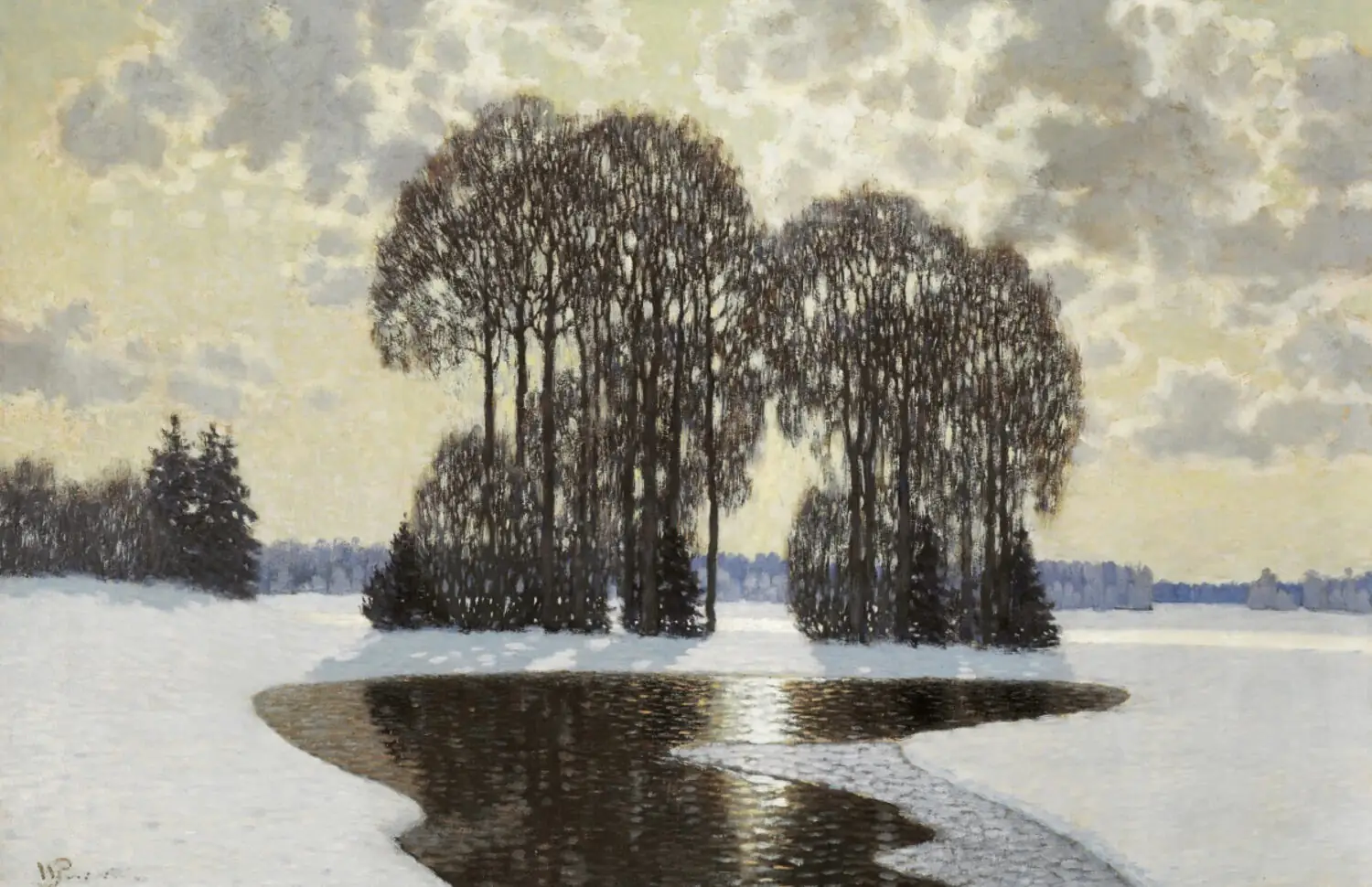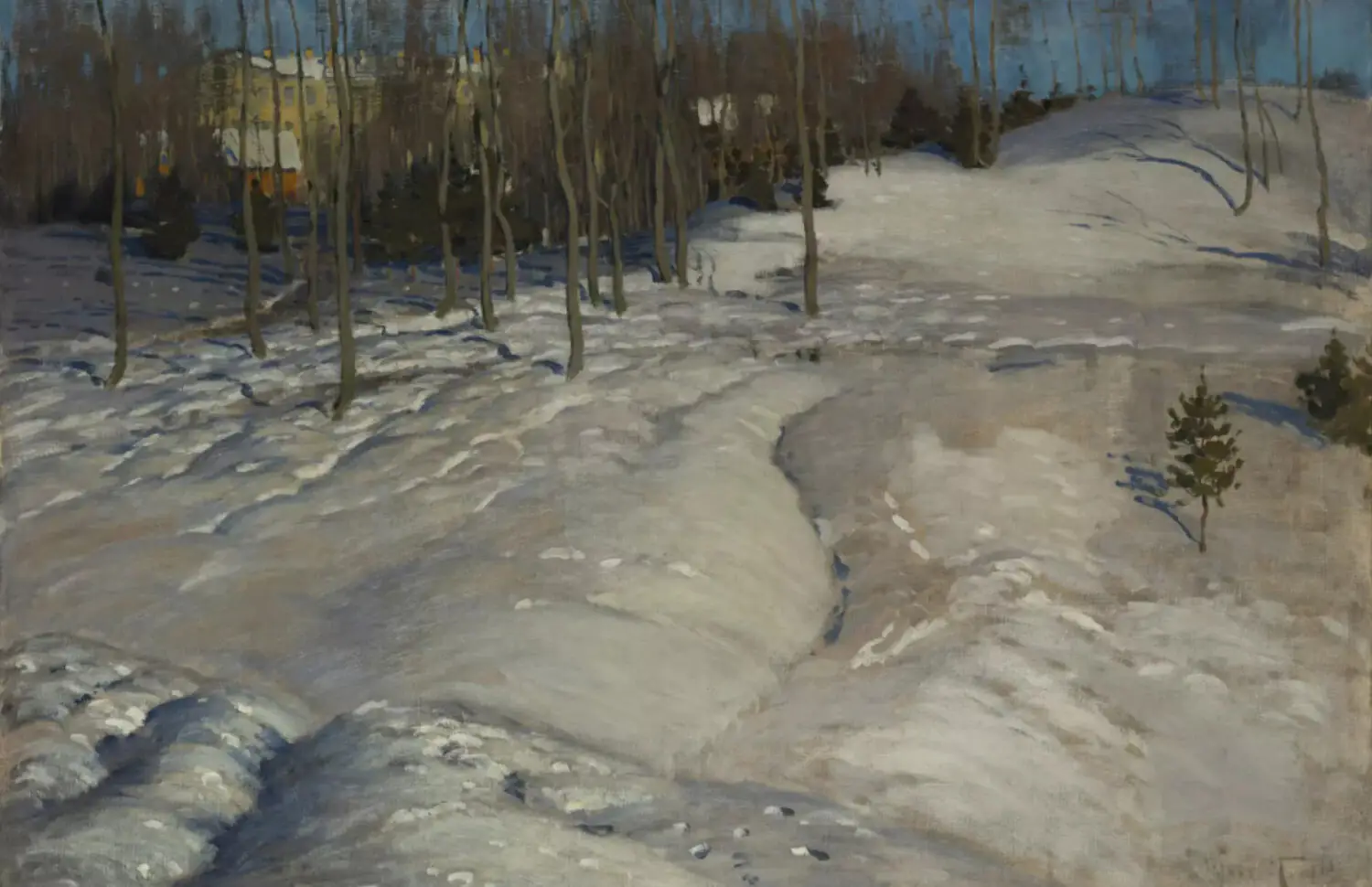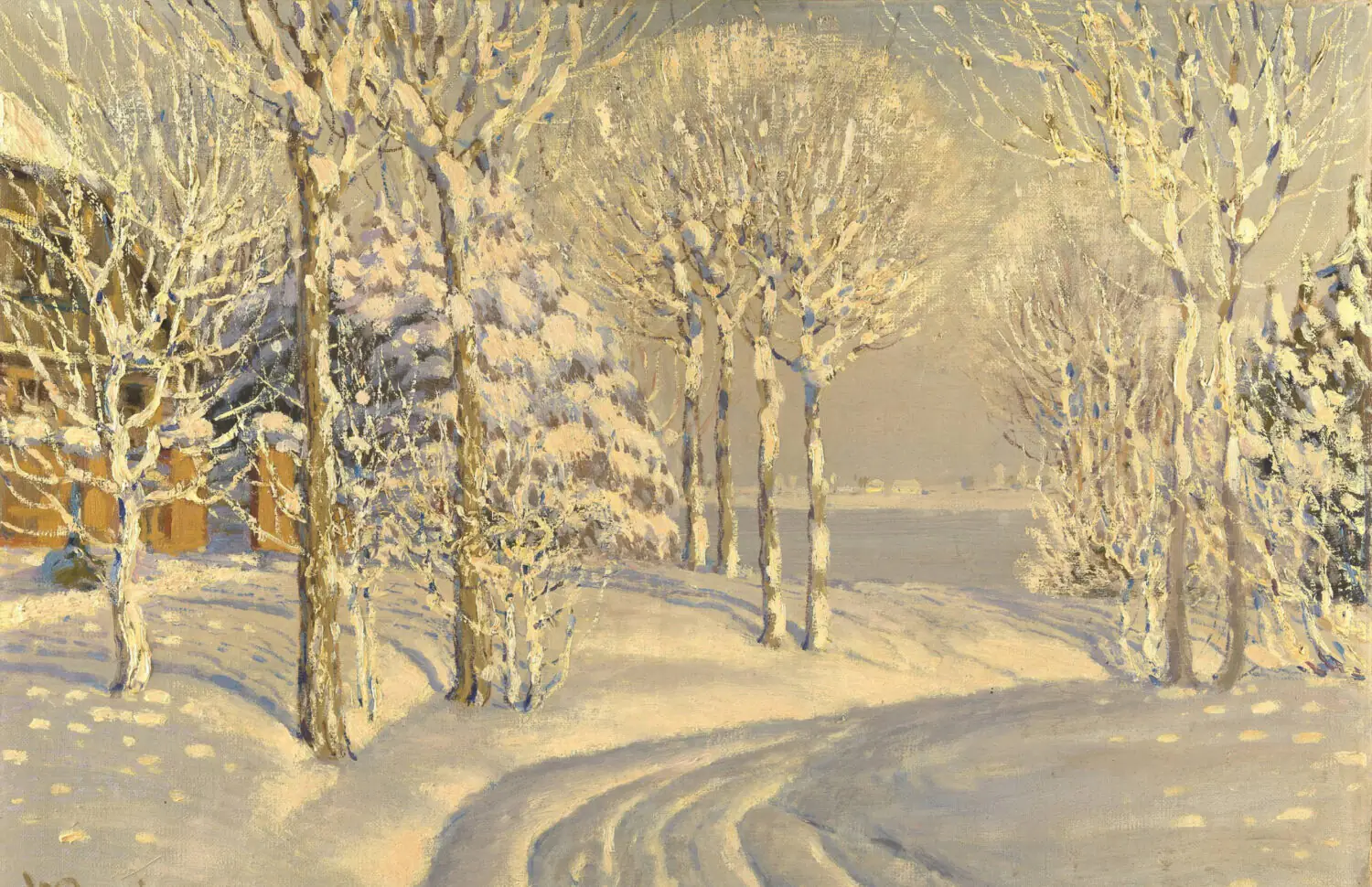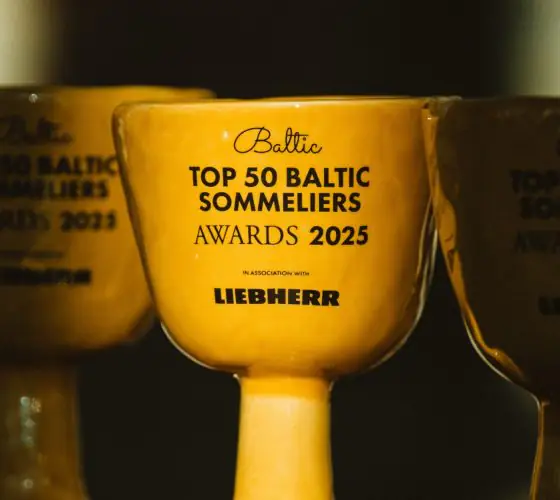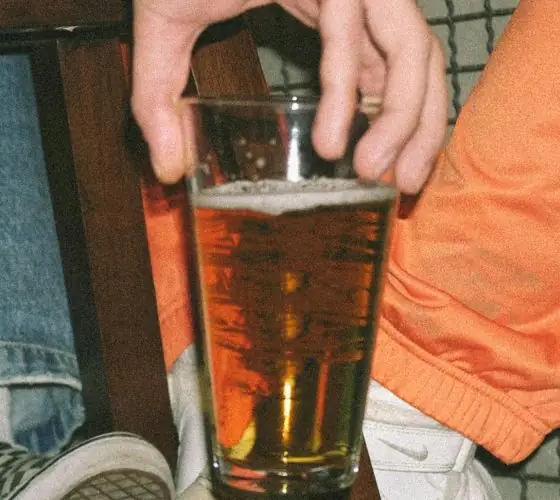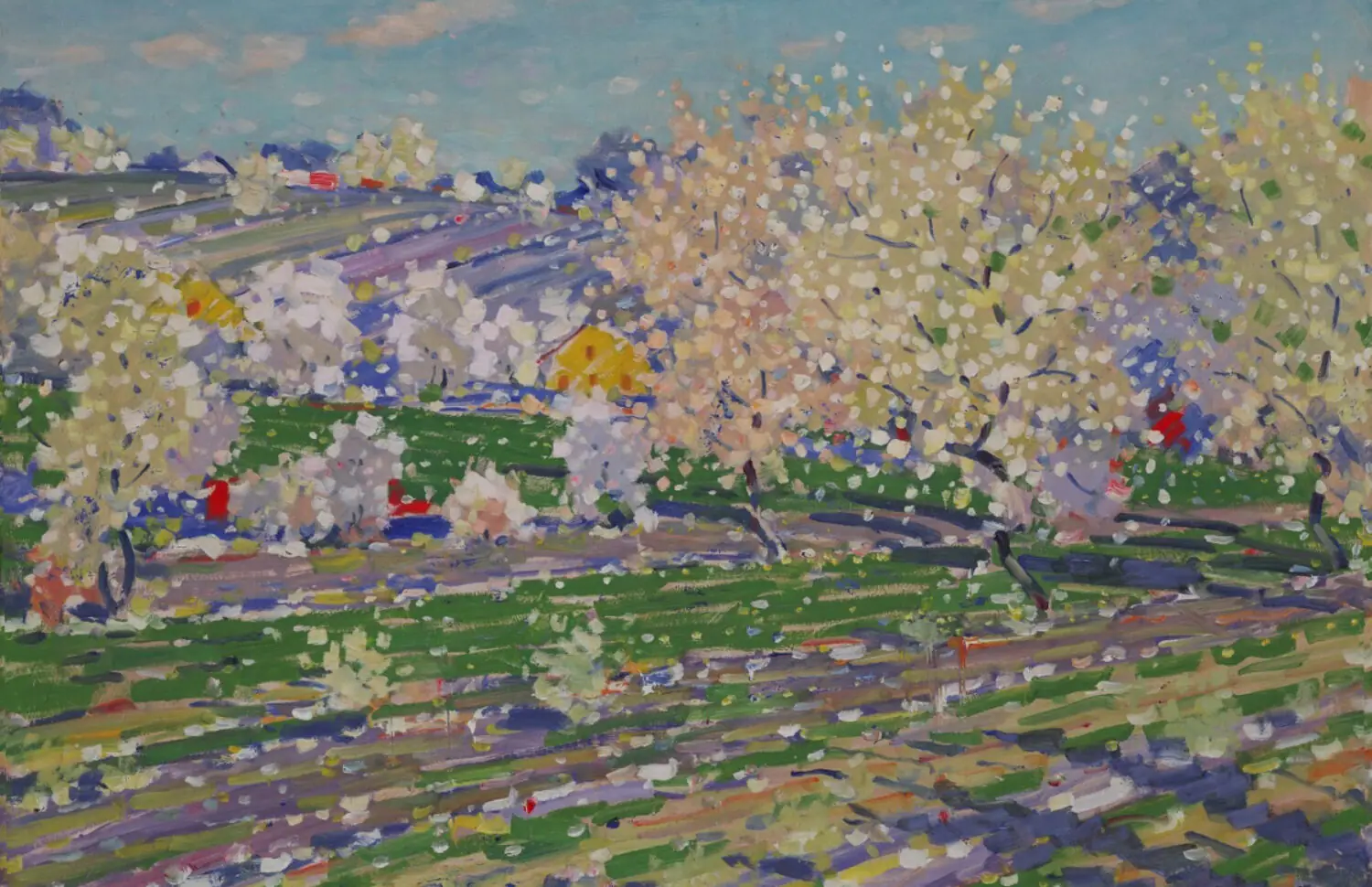
lnmm.lv
Childhood, adolescence, youth
Vilhelms Purvitis (1872-1945) is perhaps the most famous Latvian landscape painter.
He spent the first 16 years of his life on a farm called “Jauži”, admiring the beautiful landscapes that surrounded him. Today, the artist’s childhood home is a historical monument that you can visit (and grab some inspiration). At the age of 18, Purvitis entered the Imperial Academy of Arts in Petrograd (at that time Latvia was still a part of the Russian Empire). In just three years, he passed all the elementary classes of the Academy and received the right to enter an art masterclass. The man in whose class he ended up played a major role in the entire creative life of Purvitis.
This man, a true master, was Arkhip Kuindzhi, known for his “shining paintings” (experts are still debating about how Kuindzhi managed to achieve such colors in his works). Purvītis later described his teacher as: “a person who maintains courage when hope disappears.” Many years later, on the desktop of his Riga apartment, there will be a portrait of the first master.
After seven years of studying, Purvitis finally received the title of an artist. He romantically calls his thesis “At the Last Rays” (we can only guess what the painting was, because only the name has survived over time). And after graduation, Kuindzhi arranges a real gift for his students – they go to Europe. Paris, Vienna, Rome, Lyon, Berlin – all these cherished cities and their art galleries flash before the eyes of former students. It won’t be long until Vilhelms Purvitis returns there again – only this time not just as an observer.
Student’s promise
Having just entered the Petrograd Imperial Academy of Arts, Purvitis formed a student circle together with other natives of Latvia. The main idea of this group sounded like this: “First we become good artists, then we return to Latvia to develop Latvian art.”
And that’s exactly what happened to Purvitis: 20 years after this bold student’s promise, he became the director of the Riga Art School. In just a few years, its prestige and funding grew substantially.
And after the First World War – a year after Latvia gained its first independence – the artist once again proved his dedication to art and country. In 1919, by the initiative of Purvitis, the Latvian Academy of Arts was founded (still the most prestigious art academy in Latvia).
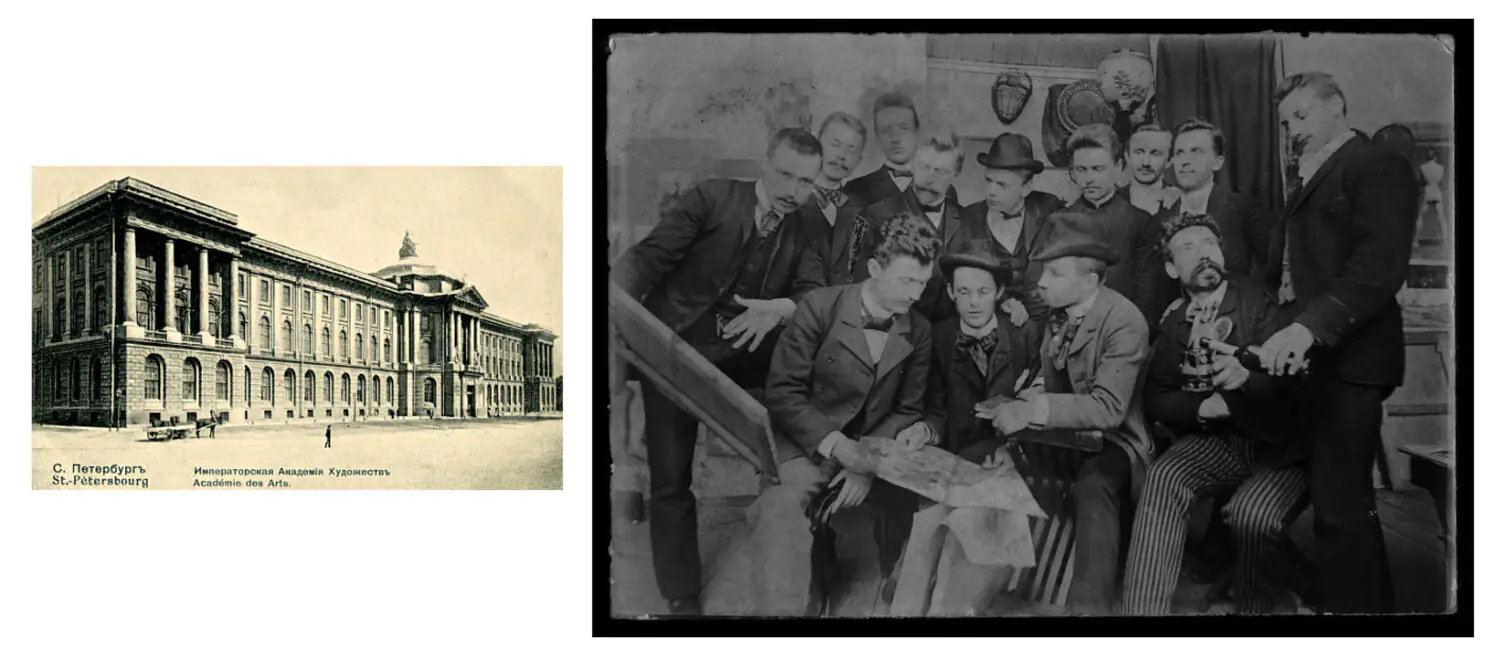
laikmetazimes.lv / arterritory.com
Father of Latvian Impressionism
Vilhelms Purvitis changed a lot during his creative life: his work is divided into “early Purvitis” and “late Purvitis”. Realism, impressionism, fauvism, expressionism – the artist challenged himself in all directions.
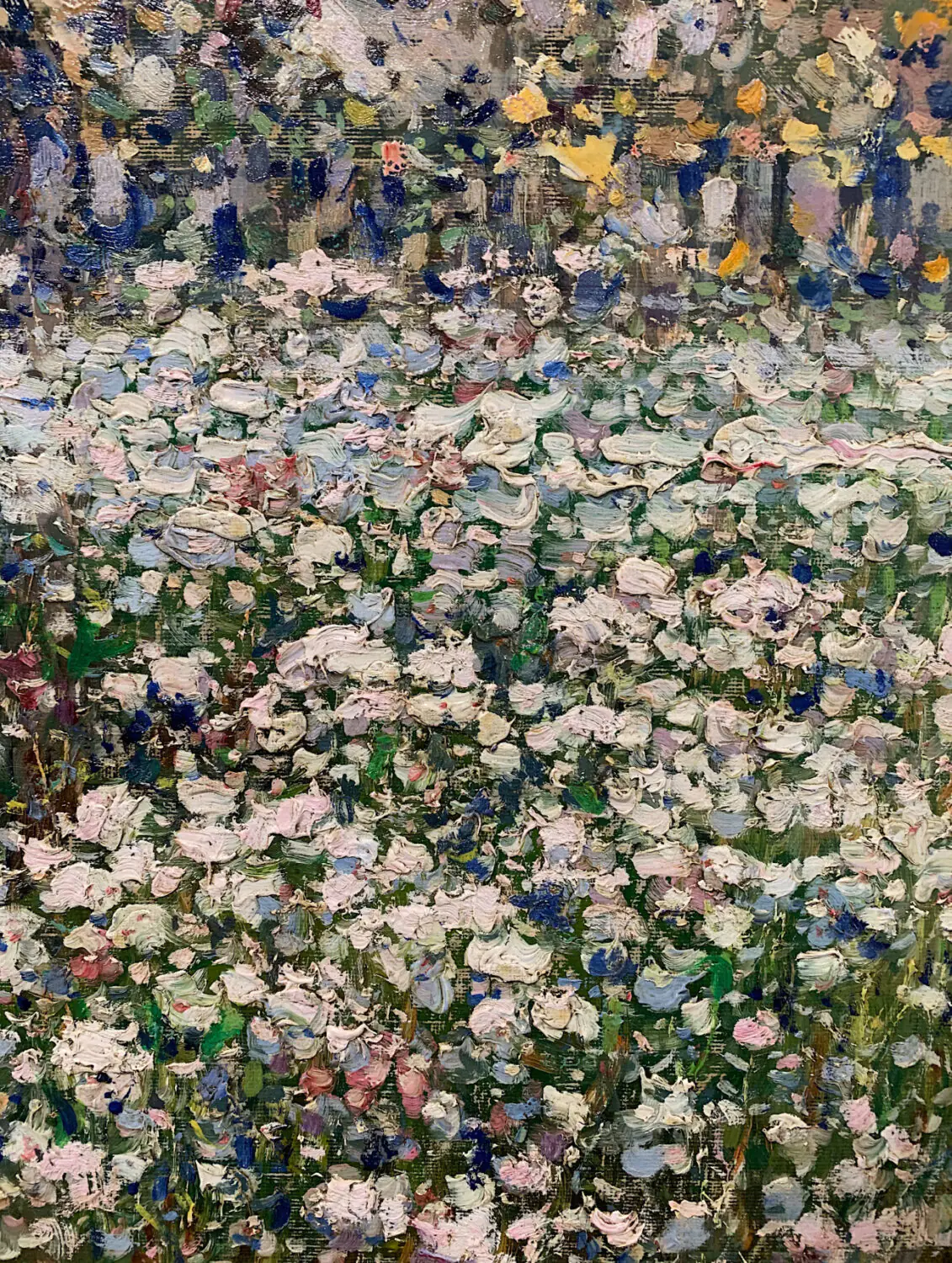
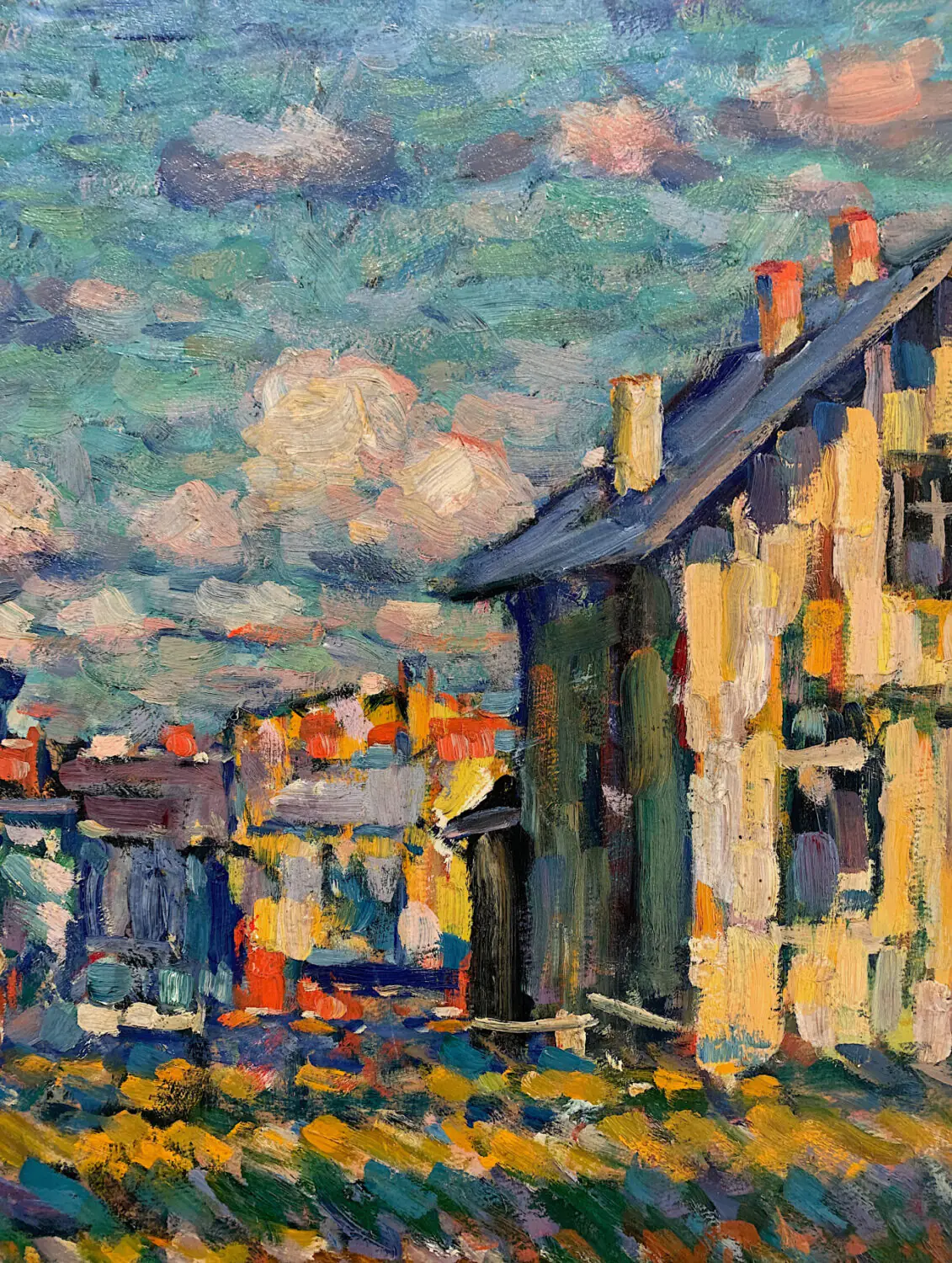

In the “early Purvitis”, Kuindzhi’s strong influence is noticeable: for example, his innovations in color and light (Kuindzhi’s paintings literally shone), and departure from an accurate representation of objects.
Another great painter who influenced the early work of Purvitis is Isaac Levitan. Inspired by the works of the master, over the years Purvitis created his own formula for the famous Levitanovsky’s “mood landscape” (a landscape in which the artist includes his personal ideas and feelings).
A little later, Purvitis was inspired by impressionism so much that he was even named the “father of Latvian impressionism”. The most striking example is the painting “Spring (blooming time)”.
However, it is commonly known that the “late Purvitis” created his own unique style – a combination of realism, impressionism and northern modernity.
Physiology of snow
Purvitis is also often referred to as “the poet of snow and water” or “physiologist of snow”. Why snow?
Purvitis’ works are not about photographic accuracy. Rather, they capture the constant change in the state of an object. Such a transformation is clearly visible in the snow. Purvitis “hunted” for this even on the most severe winter days. Such “artistic hunts” sometimes went beyond the borders of Latvia – in his studies of “physiology of snow”, the artist traveled to Nordic countries.
Now it is clear why so many of Purvītis’ works depict the period of late winter and early spring. This is the time when the transformation of snow takes place right in front of our eyes.
The landscapes of Purvītis are considered to be the trademark of Latvian visual arts. Lively, light, very voluminous, and most importantly – so familiar that, looking at them, everyone is transferred to the space of sensations and memories, out of the space of dry perception. Many say that Purvitis’ landscapes have made a huge contribution to the multi-layered Latvian identity.
Where can I see Purvitis’ creations?
After the First and Second World Wars, out of more than 2000 paintings created by the artist, no more than 200 survived. His most famous works are considered to be “Spring Waters”, “Winter” and “Spring”. They (as well as other paintings by the artist) can be seen in the Latvian National Art Museum. Most of them are on permanent display there.
And in 2008, the Vilhelms Purvitis Prize appeared, which is awarded every two years to an outstanding Latvian artist “for contribution in the development of fine arts of the country”.
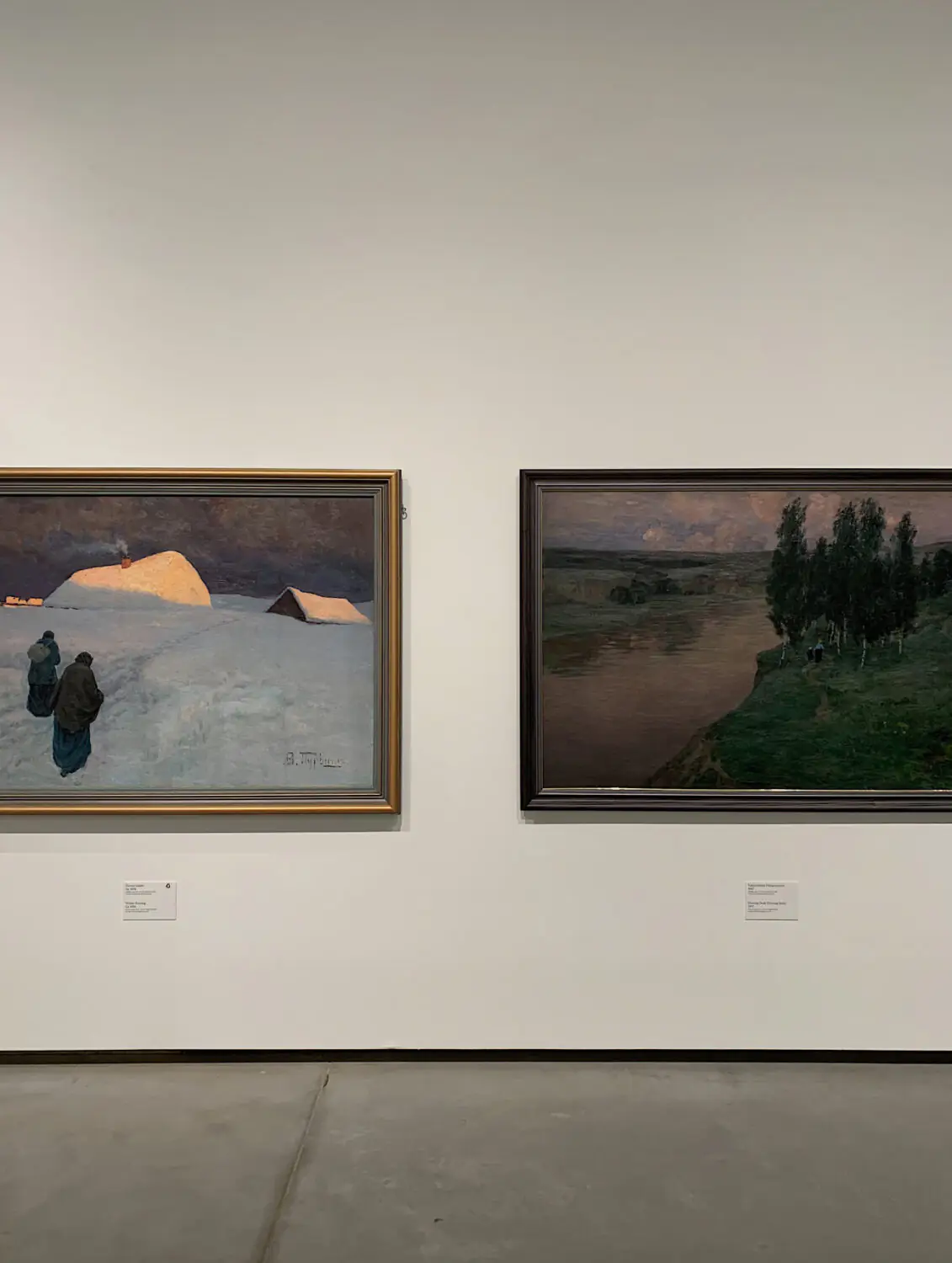
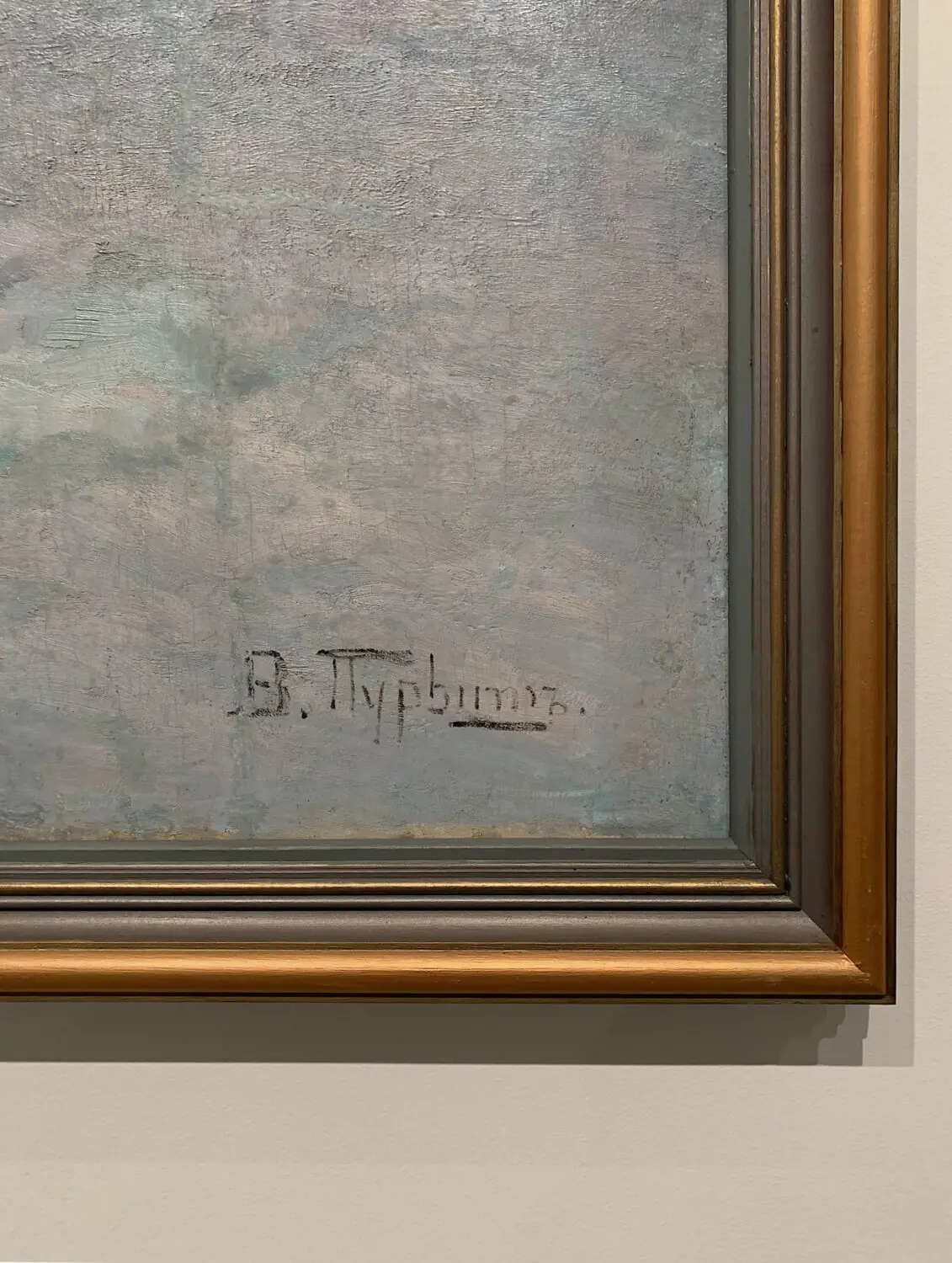
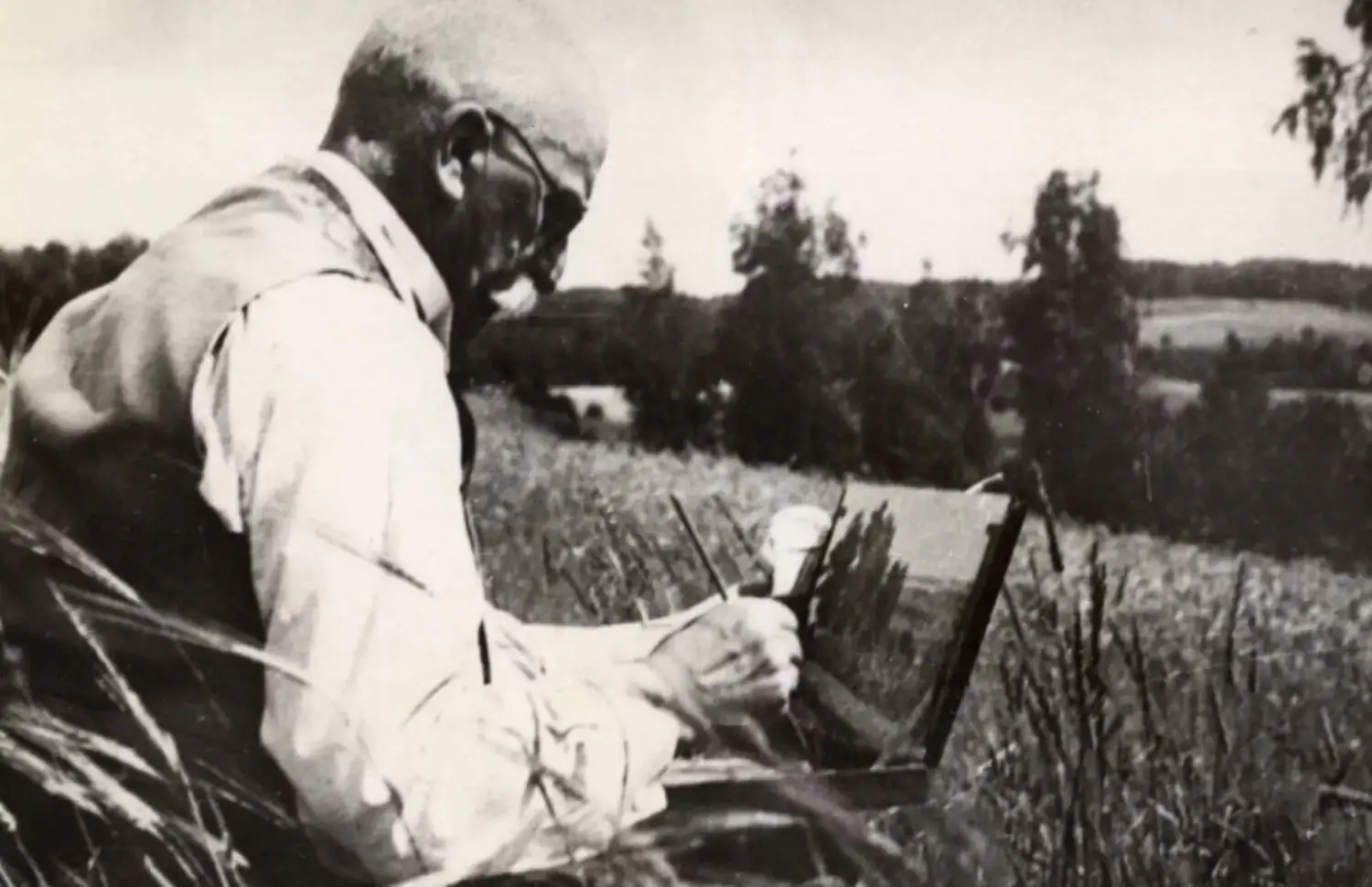
Photo: Jānis Maršāns.
lnmm.lv

